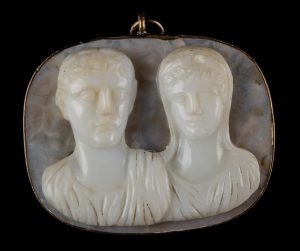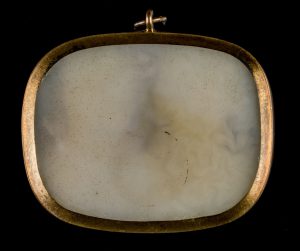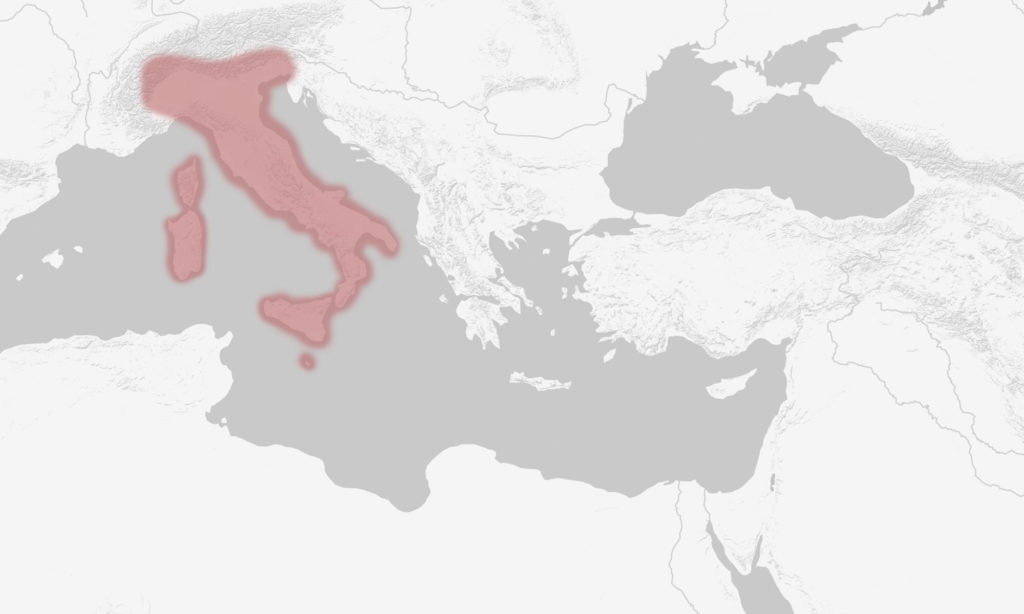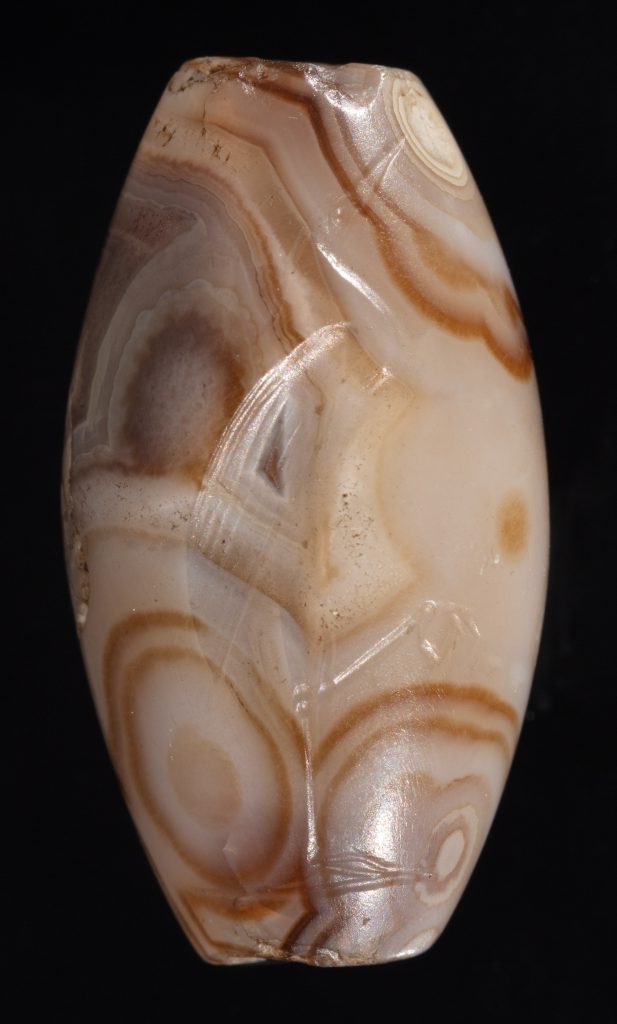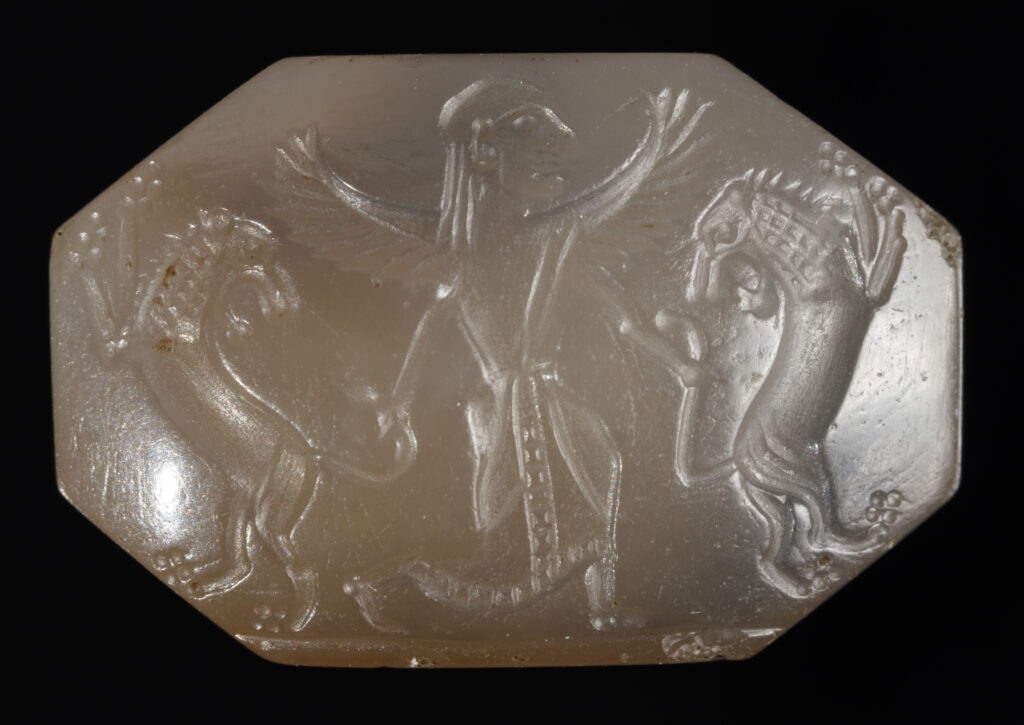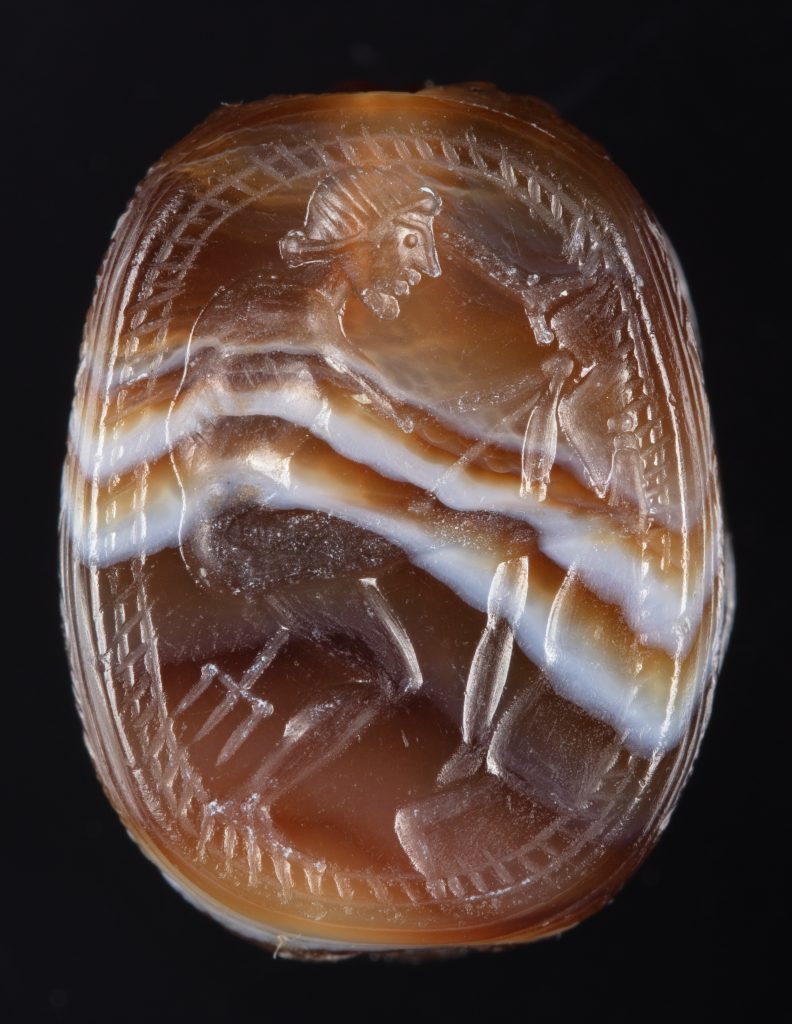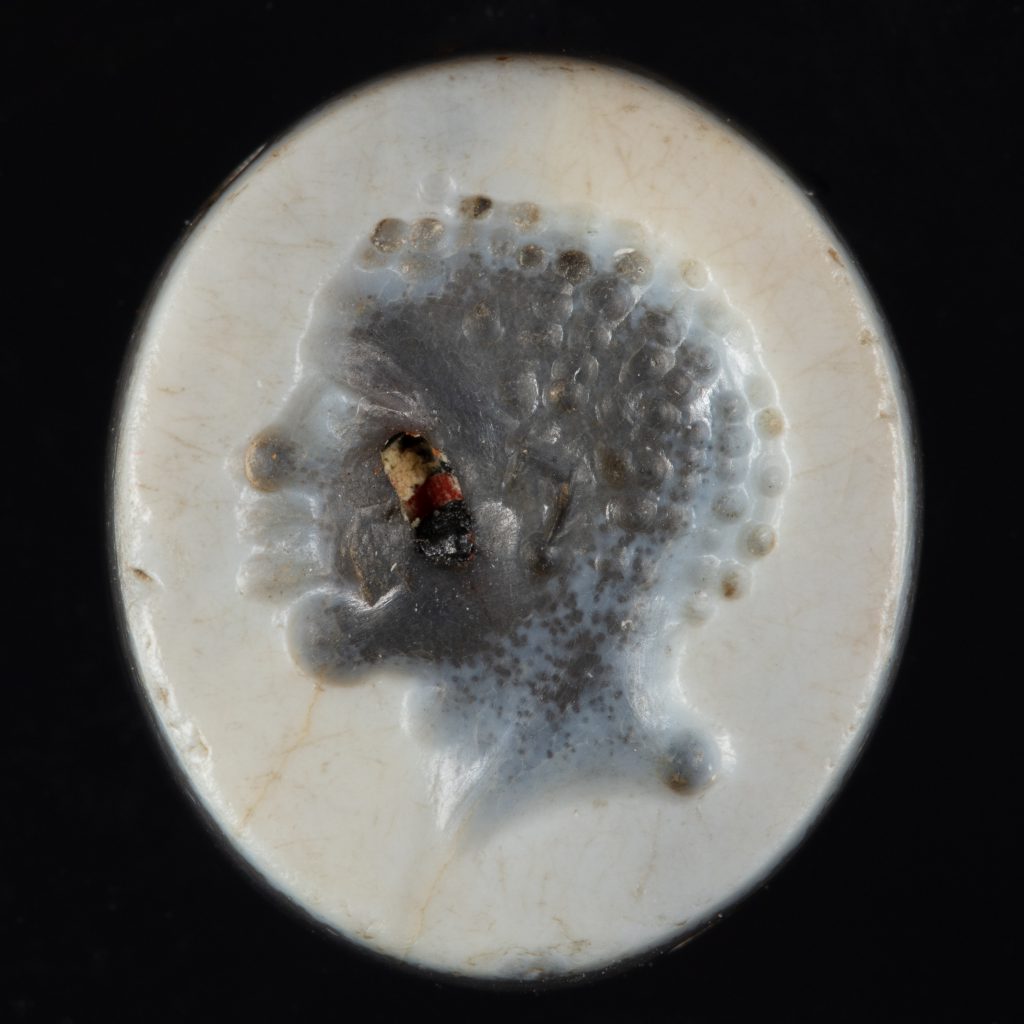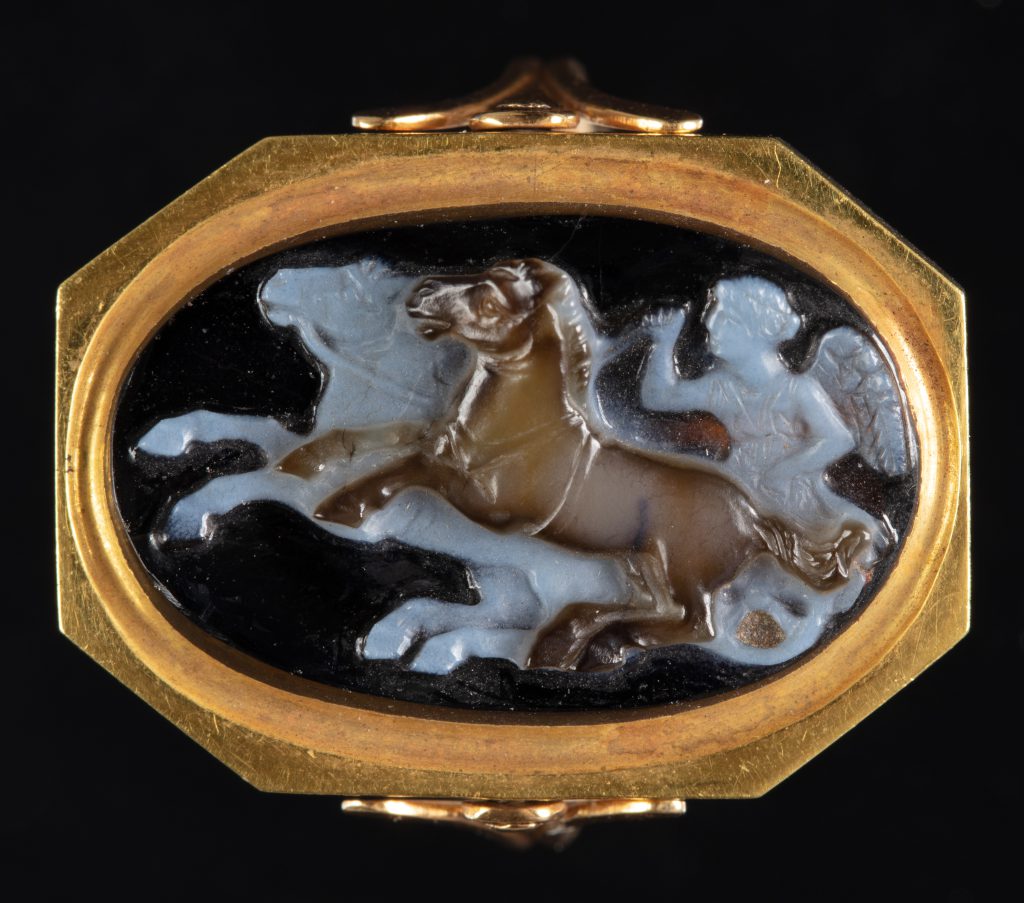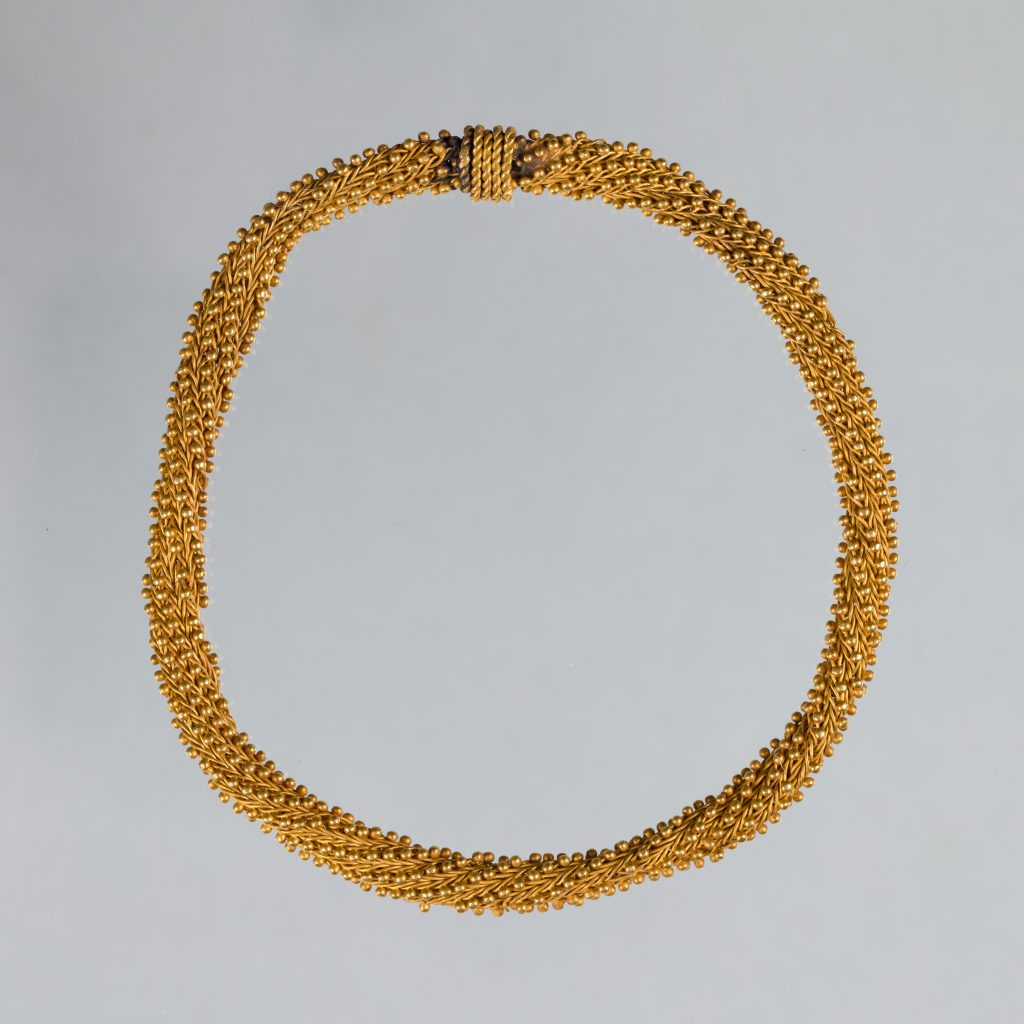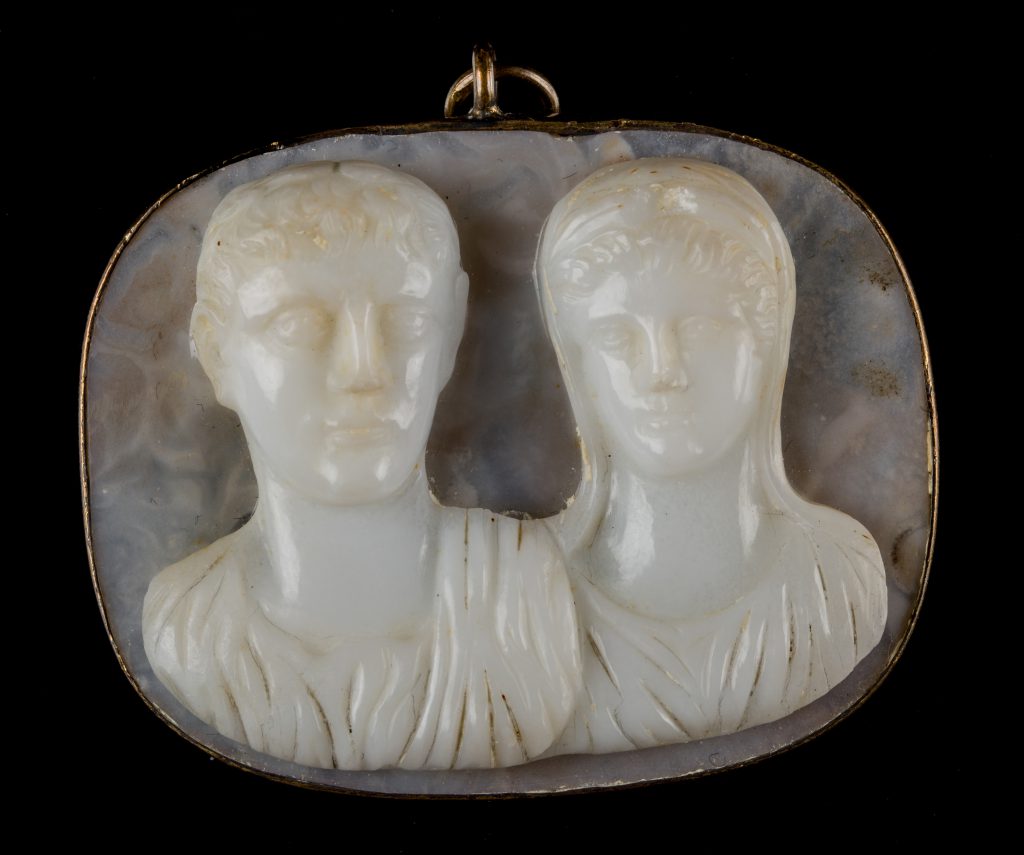
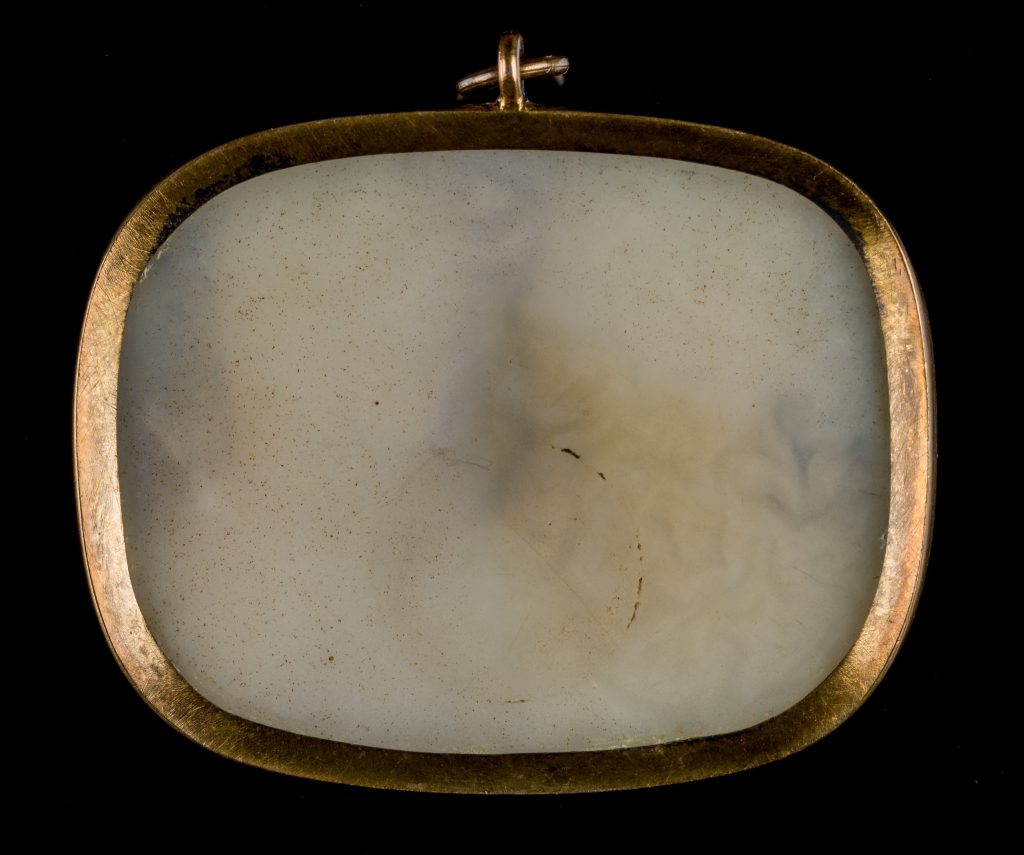
Gift of Edward Perry Warren, Esq., Honorary Degree 1926
1915.1.1This intimate scale of this fine example of Roman luxury arts stands in marked contrast to public imperial portraiture like the marble head of Antoninus Pius. Intended for private consumption, such cameos were treasured heirlooms among the Roman elite. Cameos became particularly popular beginning in the first century CE and were carved from colorful, semi-precious stones such as agate, sardonyx, and onyx, as well as shell and glass. This cameo in Bowdoin’s collection is notable for presenting an intimate portrait of a Roman couple, a rarity among cameos. The pair wears traditional clothing that reinforces their status as elite citizens of Rome. The man is clad in a simple toga draped over his left shoulder, while the woman wears a palla, the mantle of a married woman, draped over her head. The dress, hairstyles, and facial features of both man and woman draw on the imperial portraiture of the Julio-Claudian dynasty dating this cameo to the first century CE.
Before 1915, collection of Edward Perry Warren; 1915, gifted to the Bowdoin College Museum of Art by Edward Perry Warren.
Collector
A testament to his impact as an influential twentieth-century American antiquities collector, Edward Perry Warren’s (1860–1928, H ’26) name is linked to hundreds of ancient objects housed in institutions across the United States, including more than five hundred works at the Bowdoin College Museum of Art alone.
